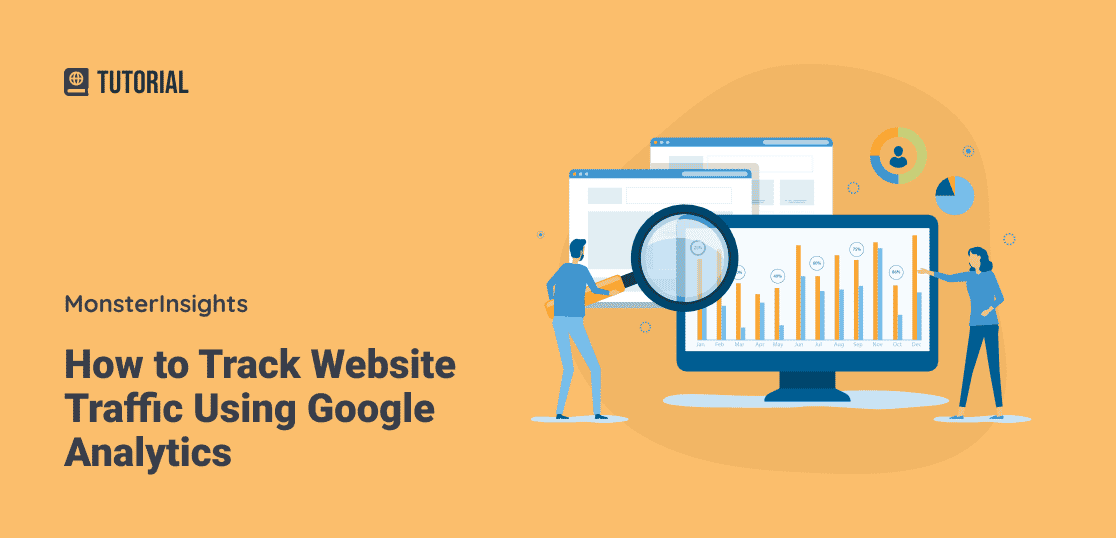Debunking What Is Not Considered a Source in Google Analytics by Default
Wiki Article
Using the Complete Possible of Google Analytics for Business Development
In the realm of electronic business approaches, Google Analytics stands as a stalwart tool for companies seeking to browse the intricacies of online information. As companies aim to make enlightened choices and optimize their on-line existence, the concern occurs: Exactly how can one genuinely unlock the complete potential of Google Analytics to move organization growth and attain strategic objectives?Establishing Google Analytics Account
Establishing your Google Analytics account is a crucial first action in efficiently tracking and analyzing information for your business development. To begin, see the Google Analytics internet site and indicator in with your Google account. Next, click "Start absolutely free" and follow the prompts to establish up your account by supplying details concerning your website, such as the name, URL, market group, and reporting time area.After completing these steps, you will get a tracking ID, which is an unique code that you require to contribute to your site. This code allows Google Analytics to gather information and create records based on the task taking place on your website. You can add this tracking ID by hand to your site's HTML code or utilize a plugin if you are making use of a platform like WordPress.

Recognizing Key Metrics

Traffic Sources: Understanding where your internet site traffic is originating from (direct, organic search, social media sites, recommendations) helps in tailoring your advertising and marketing techniques to concentrate on networks that drive one of the most visitors.
Bounce Price: This statistics indicates the percent of site visitors who browse away from your site after watching only one page - What Is Not Considered A Source In Google Analytics By Default. A high bounce rate might signal concerns with website usability or material importance
Conversion Price: Tracking the percent of site visitors who finish a wanted activity, such as purchasing or authorizing up for a newsletter, is crucial for assessing the efficiency of your website in accomplishing company goals.
Pageviews: Monitoring the variety of times each web page on your website is checked out offers insights right into prominent web content and individual engagement levels.
Carrying Out Customized Monitoring
To boost the deepness of insights gathered from Google Analytics, businesses can profit dramatically by including custom-made tracking methods tailored to their have a peek at these guys certain objectives. Customized tracking enables companies to track special information points that are not captured by default in Google Analytics. By executing customized monitoring, business can get a much more thorough understanding of customer actions, conversion patterns, and various other vital this metrics that are critical for making informed service decisions.One common method of custom-made monitoring is establishing occasion tracking to check details individual interactions on a web site, such as click switches, video views, or downloads. This enables organizations to examine the effectiveness of their internet site aspects and marketing projects more exactly.
In addition, companies can create custom-made measurements and metrics to track and evaluate information that specifies to their market or organization design. For instance, an ecommerce company may establish personalized tracking to keep an eye on the performance of different item groups or customer sections.
Evaluating Conversion Paths
By leveraging the understandings obtained from custom tracking techniques, organizations can currently concentrate on analyzing conversion paths to further fine-tune their understanding of individual habits and maximize their conversion approaches. Analyzing conversion paths involves checking out the sequence of steps users take before completing a desired action, such as buying or authorizing up for a service. By delving into the conversion courses within Google Analytics, businesses can identify usual courses that bring about conversions, along with any kind of traffic jams or drop-off factors that may hinder the conversion process.Through the evaluation of conversion courses, companies can gain valuable understandings right into the efficiency of their site format, web content, and phones call to action. This data can aid organizations make notified go decisions about where to allocate sources for maximum influence on conversion rates. By recognizing the various paths customers handle their journey to conversion, businesses can customize their advertising approaches to far better guide customers with the conversion funnel and inevitably enhance their overall conversion prices.
Using Advanced Features
Take advantage of the complete capacity of Google Analytics by discovering its innovative attributes to improve your service's data-driven decision-making capabilities. Custom-made records allow you to tailor the information displayed to fulfill your specific company requirements and purposes.
In addition, progressed segmentation allows you examine various parts of your site's traffic to recognize patterns, opportunities, and fads. By segmenting your target market based on numerous criteria like demographics, actions, or traffic resources, you can better understand their choices and tailor your advertising and marketing techniques appropriately. Leveraging these advanced functions in Google Analytics can provide valuable insights that drive informed decision-making and inevitably contribute to your business's growth.
Final Thought
In verdict, using the complete potential of Google Analytics for company growth involves setting up an account, understanding crucial metrics, executing custom-made tracking, assessing conversion paths, and using advanced functions. By using these methods effectively, services can obtain important insights right into their website performance, individual habits, and conversion prices. This data-driven strategy can aid organizations make informed decisions, enhance their on the internet visibility, and inevitably achieve sustainable development.As organizations strive to make informed decisions and optimize their online presence, the inquiry arises: How can one truly unlock the full potential of Google Analytics to push organization growth and achieve strategic purposes?To enhance the depth of insights gathered from Google Analytics, businesses can benefit considerably by integrating customized tracking methods tailored to their particular goals. Customized tracking allows organizations to track one-of-a-kind information points that are not recorded by default in Google Analytics. By diving right into the conversion paths within Google Analytics, companies can identify usual courses that lead to conversions, as well as any kind of traffic jams or drop-off points that may prevent the conversion procedure.
In final thought, utilizing the full potential of Google Analytics for business development includes setting up an account, recognizing crucial metrics, executing custom tracking, analyzing conversion courses, and using advanced attributes.
Report this wiki page